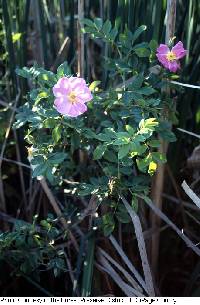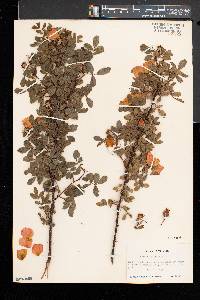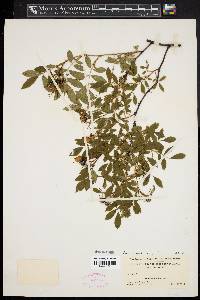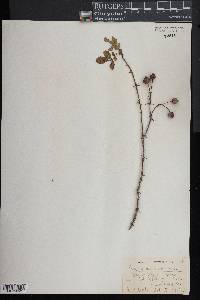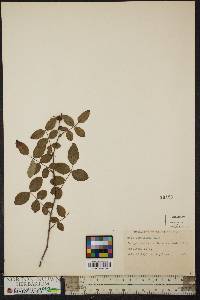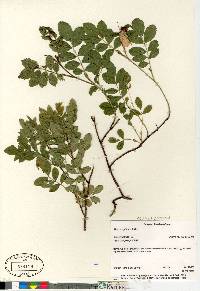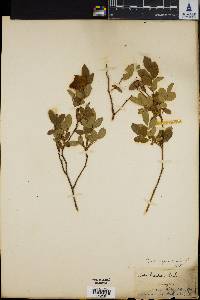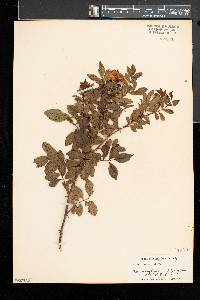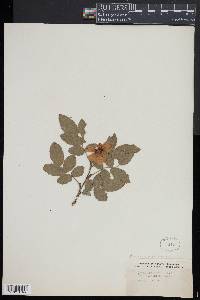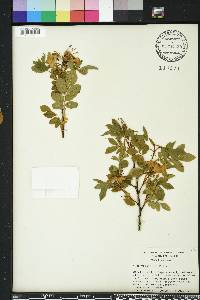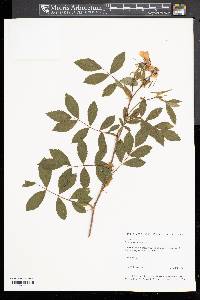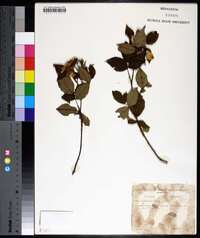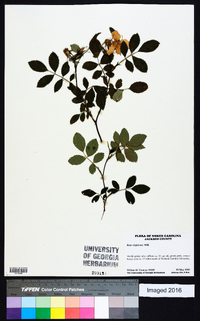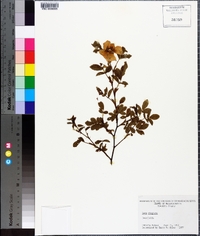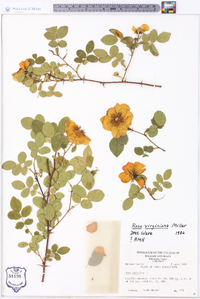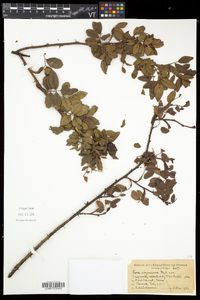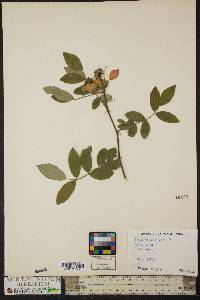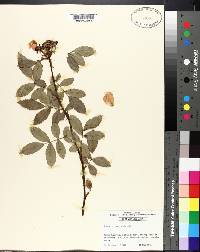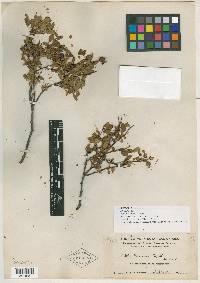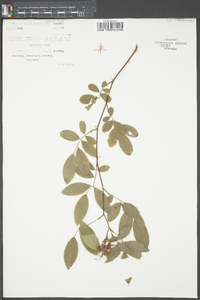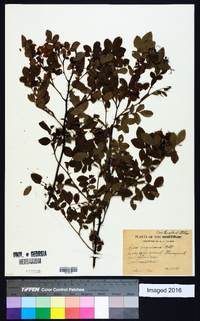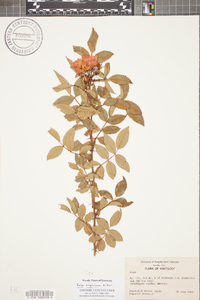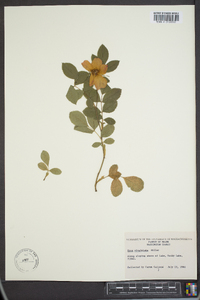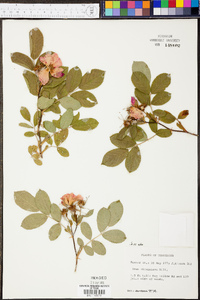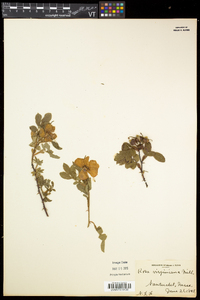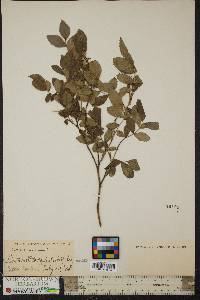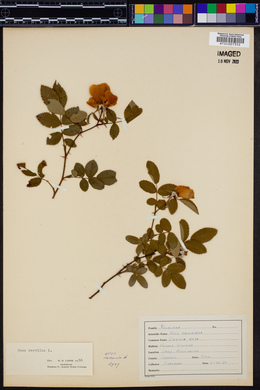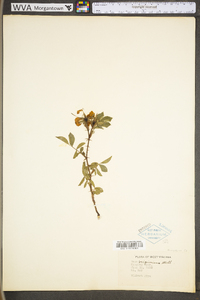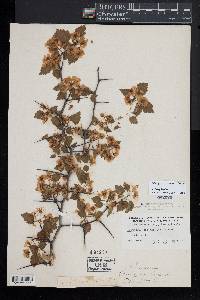
|
|
|
|
Family: Rosaceae
Virginia Rose
[Rosa gemella Willd., moreRosa lucida var. lamprophylla (Rehder) P.V. Heath, Rosa nanella Rydb., Rosa virginica] |
Shrub, rarely forming colonies to 2 m tall Stem: stout, branched, 4 - 10 mm thick at base, variously prickly near bottom, lacking or having few prickles between nodes, young shoots bristly. The prickles beneath the stipules are stout and somewhat curved with a flattened base. Leaves: pinnately compound, stalked, with five to eleven (usually seven or nine) leaflets. The leaflets are glossy dark green above, 2 - 6 cm long, 1 - 3 cm across, oblong to elliptic or egg-shaped with a pointed tip and a rounded to wedge-shaped base, coarsely toothed with more than fifteen primary teeth (about 1 mm high) per side, firm, and more or less hairless but sometimes hairy-veined beneath. Flowers: solitary or borne on a few-flowered nearly flat-topped cluster (corymb) on branches of old wood, 5 - 7 cm across, with a stalked-glandular stalk and floral tube (hypanthium), non-persistent sepals often to 3 cm long with a lance-shaped leaf-like tip that is reflexed in flower but spreading to ascending in fruit, and pink petals 2 - 3 cm long. Fruit: bony achenes surrounded by the mature floral tube (hip). The hip is red and 10 - 15 mm thick. Achenes tan-brown to pale chestnut brown, 3.5 - 4 mm across, inversely egg-shaped. Stipules: usually glandular-toothed, lance-shaped to semi-egg-shaped and somewhat expanded near tip. Similar species: Rosa carolina, Rosa palustris, and Rosa virginiana all have non-persistent sepals and stalked-glandular flower stalks and floral tubes. Rosa carolina differs by having straight, slender prickles and five, dull to slightly shiny leaflets with fewer than fifteen teeth per side. Rosa palustris is distinguished by its stout awl-shaped to recurved prickles, stipules that roll inward, and seven dull leaflets with more than fifteen teeth per side. Flowering: June to July Habitat and ecology: Introduced from farther east, this species grows along railroads, marsh edges, and trail edge. Occurence in the Chicago region: non-native Etymology: Rosa is the Latin name for a rose. Virginiana means "from Virginia." Author: The Morton Arboretum Stout and branched, to 2 m, scarcely colonial; infrastipular prickles stout, usually somewhat decurved, the flattened base tending to be more than half as long as the prickle; internodal prickles few and similar to the others, or none; stipules usually glandular-dentate, somewhat dilated above, the free part lanceolate to semiovate; lfls usually 7 or 9, glossy, oblong to oval or ovate, often more than half as wide as long, coarsely toothed, the teeth avg ca 1 mm high; fls solitary or few together on branches from old wood; pedicel and hypanthium stipitate-glandular; sep often conspicuously elongate, to 3 cm, with lanceolate foliaceous tip, soon spreading or reflexed, then deciduous; pet pink, 2-3 cm; hips red, 10-15 mm thick; 2n=28. Moist or dry soil; Nf. to Pa. and Va., and inland irregularly to Mo. Hybridizes with R. carolina, R. nitida, and R. palustris. (R. lucida) Gleason, Henry A. & Cronquist, Arthur J. 1991. Manual of vascular plants of northeastern United States and adjacent Canada. lxxv + 910 pp. ©The New York Botanical Garden. All rights reserved. Used by permission. |
This project was made possible in part by the Institute of Museum and Library Services [MG-70-19-0057-19].
Powered by Symbiota

